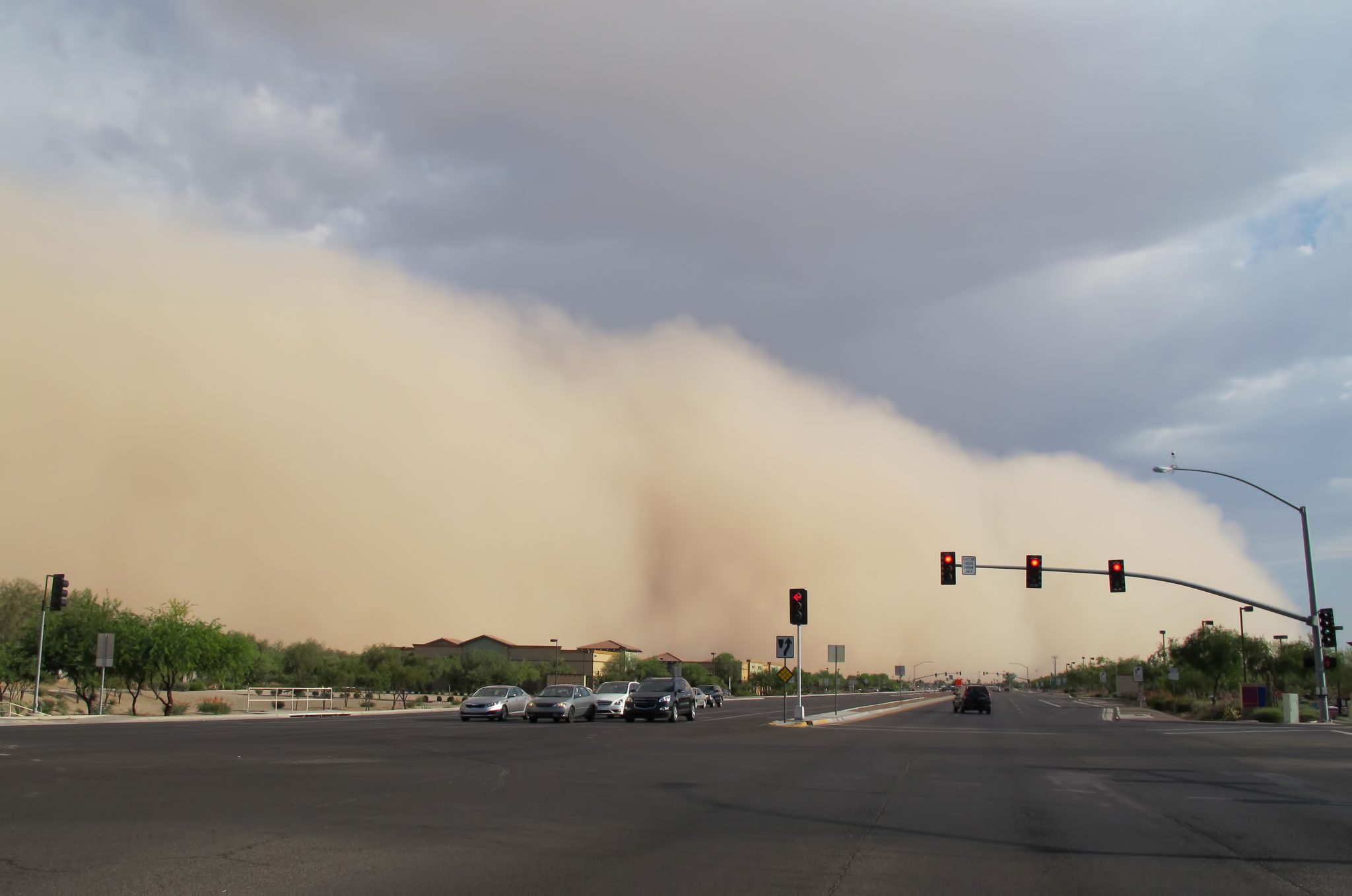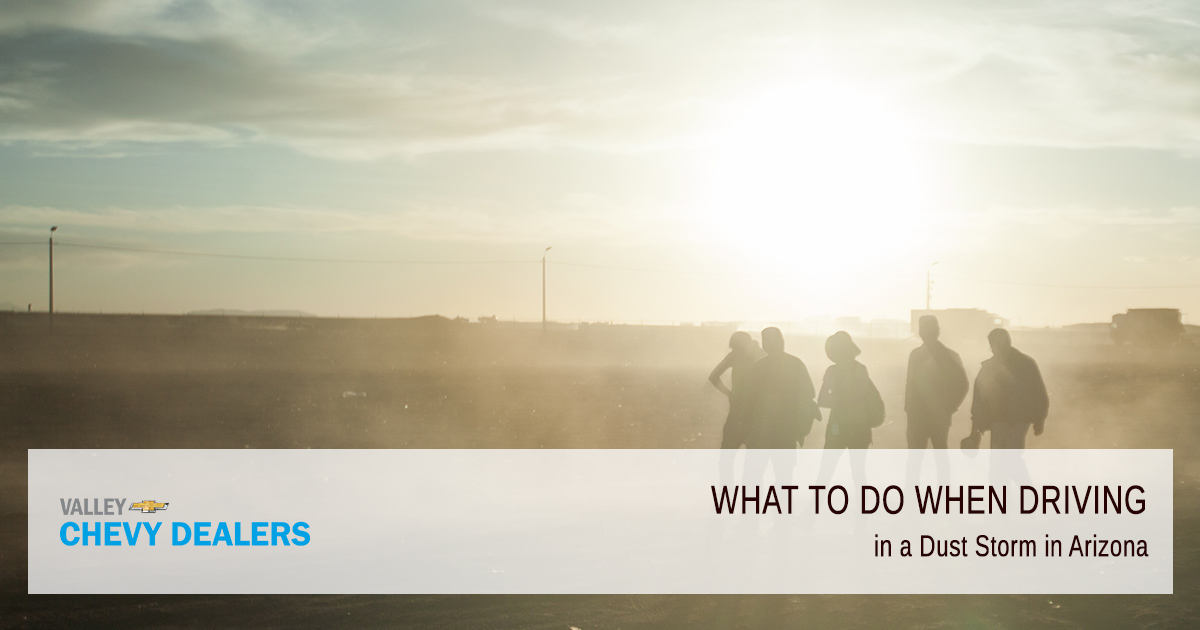How To Drive in a Haboob Arizona

While people in other parts of the United States may never have heard the word, when you live in Arizona you are familiar with what is a haboob. Each summer, this severe Arizona dust storm often comes on suddenly and has the potential for much damage. A part of the monsoon season, it approaches without warning and can even be fatal.
Whether you are a native of Arizona, have retired here, or simply chose to relocate to The Copper State to enjoy the pleasant climate and beautiful surroundings, a haboob can be scary for you. There are things that you can learn about how to best drive in a haboob should you someday experience one. It is important to know as much as you can about the haboob dust storm so that you remain safe while you are on the roadway.
What Is a Haboob
For those who are not familiar with the changing climate that is Arizona weather, a haboob is a dust storm. It happens during a thunderstorm when the storm collapses and wind gusts outwards in a rush. This is a result of cold air scurrying down, thus creating huge dust walls. Enormous amounts of dust and sand are blown into the air, obstructing visibility and even blocking out the sun.
In order to properly picture a haboob, imagine a wall of dust that generally starts around 1,500 feet and that can even get as high as 3,000 feet. By comparison, the Empire State Building is only 1,454 feet tall. Certain haboobs have been even higher, such as the one in July of 2011 that reached a whopping height of 5,000 feet. That was the biggest known haboob in this region.
In addition to such great elevation, haboobs are also quite long. Stretching for many miles, they can typically be 100 miles in length. This means that a haboob could potentially run between Tucson and Phoenix. With such a great distance, thousands of cars can be enveloped in its path at once. For those who are not familiar with these storms, and even for those who have already navigated them, haboobs can be a very scary sight. For some, they may even be the cause of severe anxiety. Therefore, it is important to familiarize yourself as much as you can with how to deal with a haboob dust storm so that you can pilot yourself and your passengers to safety if you are driving when one occurs.
How To React to a Haboob
When you are on the road and a haboob strikes, you should first slow down while assessing the traffic around you. It is important to act quickly to determine a path before your visibility becomes too impaired. Also, immediately close any open windows and air vents. This helps to prevent as much dust as possible from entering your car. If you encounter tumbleweeds, it is safe to proceed over them as they do not create any property damage to your vehicle.
Next, you should try to pull off to the side of the road while using as much caution as possible. It is vital that you do not stop in the emergency or breakdown lane, since other cars may end up driving there and may strike you. Find a place to stop that is not on a roadway so you can decrease the likelihood of other vehicles trying to drive through. An unpaved stretch is often the ideal place to take a break.
Once you are stopped, you should immediately turn off all of the lights in your vehicle, both inside and out. When other cars are trying to navigate their own way through a haboob dust storm, they may see your taillights as a guide for them to follow. By turning off your lights, you are reducing the chances that other cars rear-end you in the process. Then, take other precautionary measures. Activate your emergency brake, and take your foot off the brake. Keep your seat belt buckled for the duration and calmly wait out the storm.
While driving through an Arizona dust storm can be frightening, one of the most important things that you can remember is that you should never stop your automobile on the roadway. Doing so may result in a multiple-vehicle crash that could have serious consequences. The best thing you can do for you and your passengers is find a safe place to wait out the storm until it is over. Once you have determined that the storm has passed and it is safe to proceed, continue to use caution when returning to the roadway. Remains of the great volume of dust may cover lane markings on what can be a very slippery road surface. If power lines have been knocked down, under no circumstances should you try to touch or move them.
Be Sure To Prepare for an Arizona Dust Storm
While it is true that you may have no advance warning when a haboob is approaching, you should keep an emergency kit in your car in the event that you are encircled by one. Sometimes, when many cars are subject to the haboob’s wrath at once, there can be gigantic pile-ups on Arizona roadways. This, in turn, can cause delays that may go on for hours. By engaging in a little preparation, it can make the experience more bearable than it otherwise would be.
First, be sure that your car has enough gas in it at all times. Remember, a gigantic haboob has the potential to cause many multi-car pile-ups which in turn lead to very long delays for those in close proximity. It would be terrible to be low on gas and get stranded on the highway or roadway as a result of running that tank out during the massive holdups.
Likewise, be sure that you have all the fluids checked and refilled regularly so your car is in good running order. While oil and brake fluids are important to safely run your automobile, you also need to be sure that you have a full supply of windshield wiper fluid. It may be a good idea to keep a bottle of this blue liquid in your trunk so that if you go through it quickly, you can replenish more into its receptacle. And, keep water and non-perishable food in your vehicle, too. This helps lessen any anxiety you may have should you get stuck in one of the unseemly delays.
Be Confident Through a Haboob
With a better understanding of what is a haboob, you can feel more confident that should one of these Arizona dust storms hit, you will be able to safely navigate through it until it passes. Keep your car in good working order and keep your gas tank well-filled. Should a storm hit, pull over safely and immediately, preferably onto an unpaved road, until you can safely proceed.
Also, alert any out-of-town visitors who may not be aware of the haboob what they should do in the event of one happening. You can also inform them of other safety tips for driving in The Grand Canyon State that can be found on the Valley Chevy blog.
Getty Images/BigRedCurlyGuy


